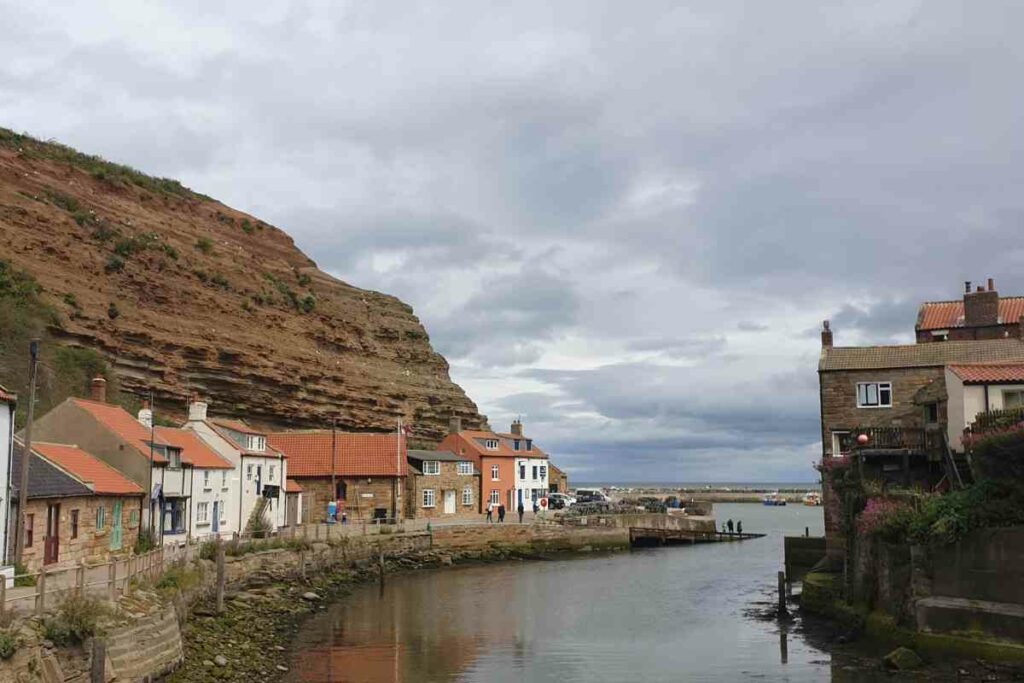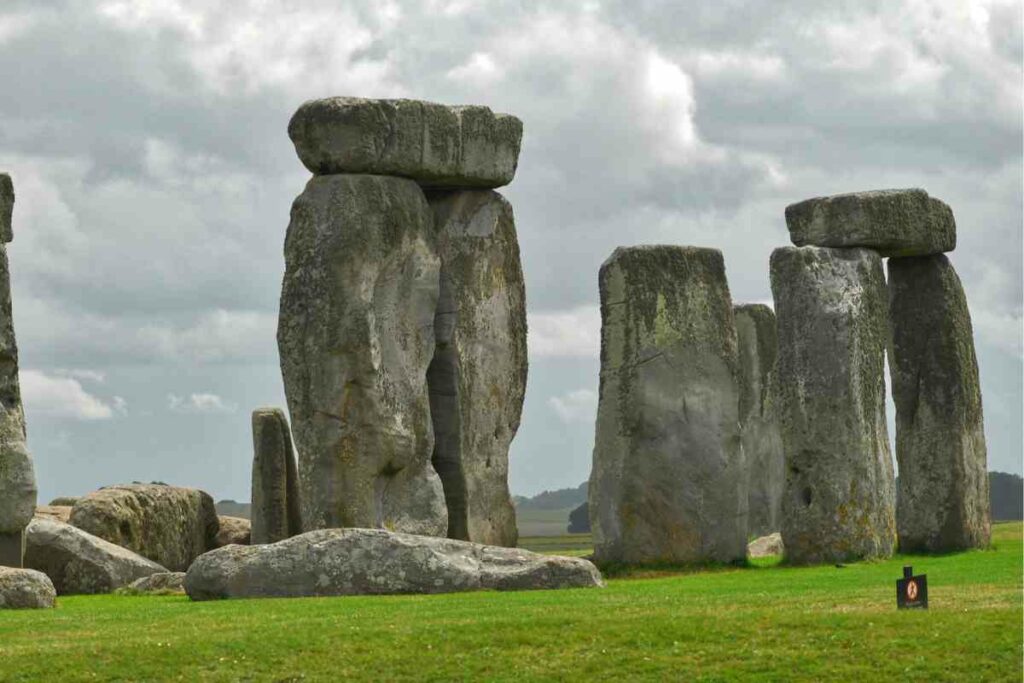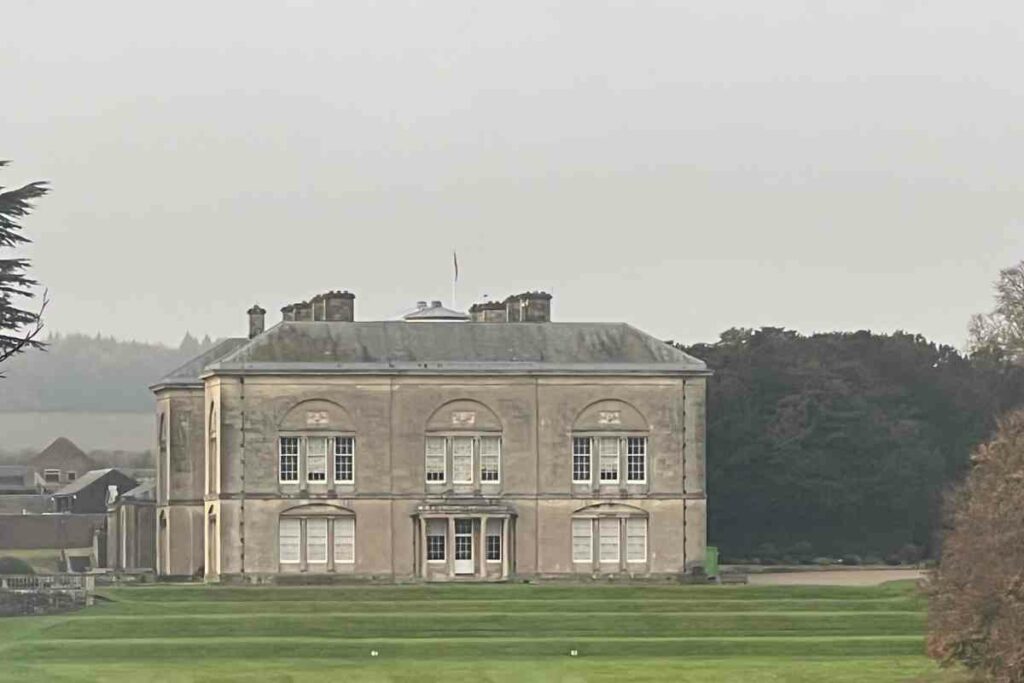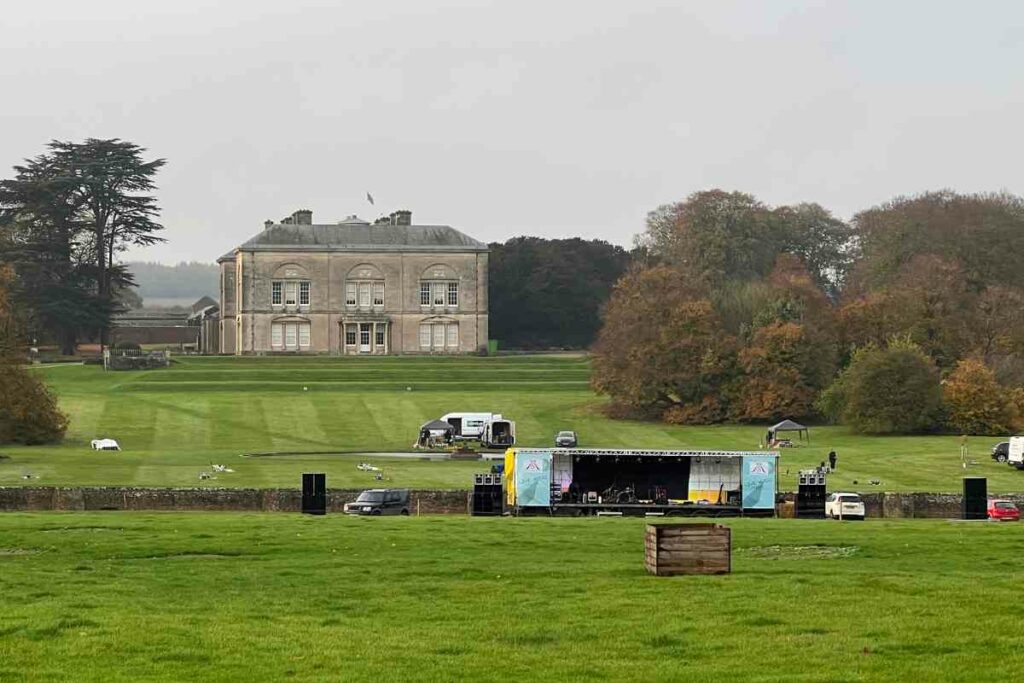A unique hill standing on the edge of the North Yorkshire Moors, Roseberry Topping is a National Trust treasure that’s popular with both locals and holidaymakers alike.
Tackling the Matterhorn of north-east England is something that most people of reasonable fitness can achieve no matter their age.
Location
Standing at 320m in height (1,049 feet), Roseberry Topping lies on the northern edge of the county of North Yorkshire.
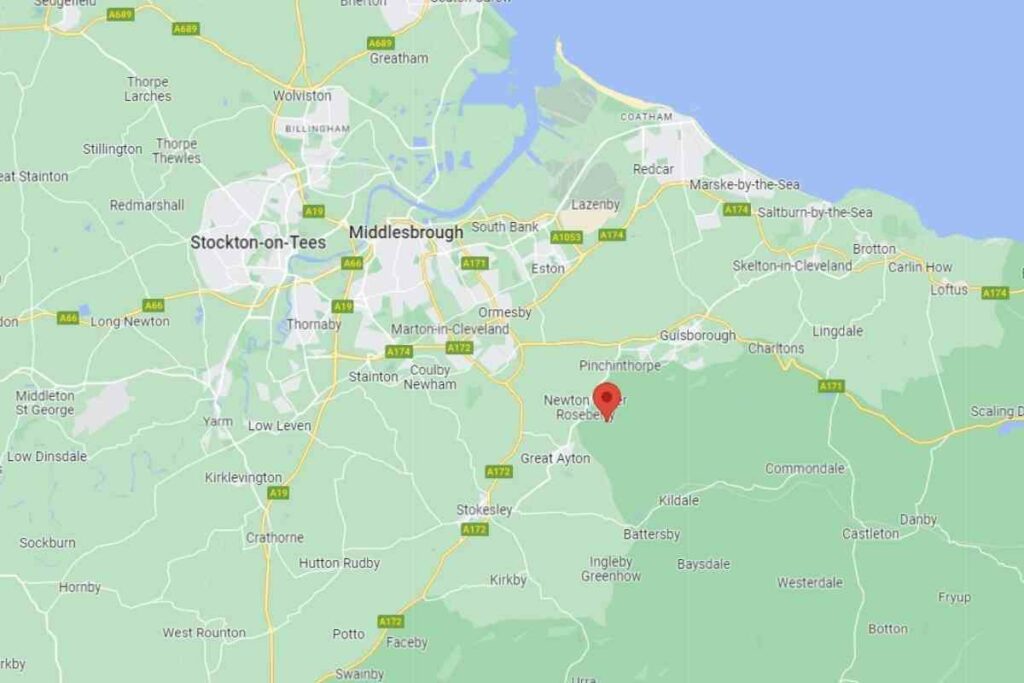
Sitting above the villages of Great Ayton and Newton-under-Roseberry, the hill is visible throughout the local area and lies aside the A173 road from Skelton to Stokesley.
Roseberry Topping provides magnificent views of the local area, stretching as far as the Pennines on a very clear day, some 64-80km away.
Geology
Roseberry Topping’s distinctive shape is made up of sandstone that was laid down between 208 and 165 million years ago, in the Middle and Lower Jurassic Periods.
According to Howard Peach in his book Curious Tales of Old East Yorkshire, the summit used to resemble a sugarloaf until its collapse, possibly due to a geological fault or perhaps the nearby ironstone and alum mining.
History
The area surrounding the famous landmark has been inhabited for centuries with the hill always having attracted attention.
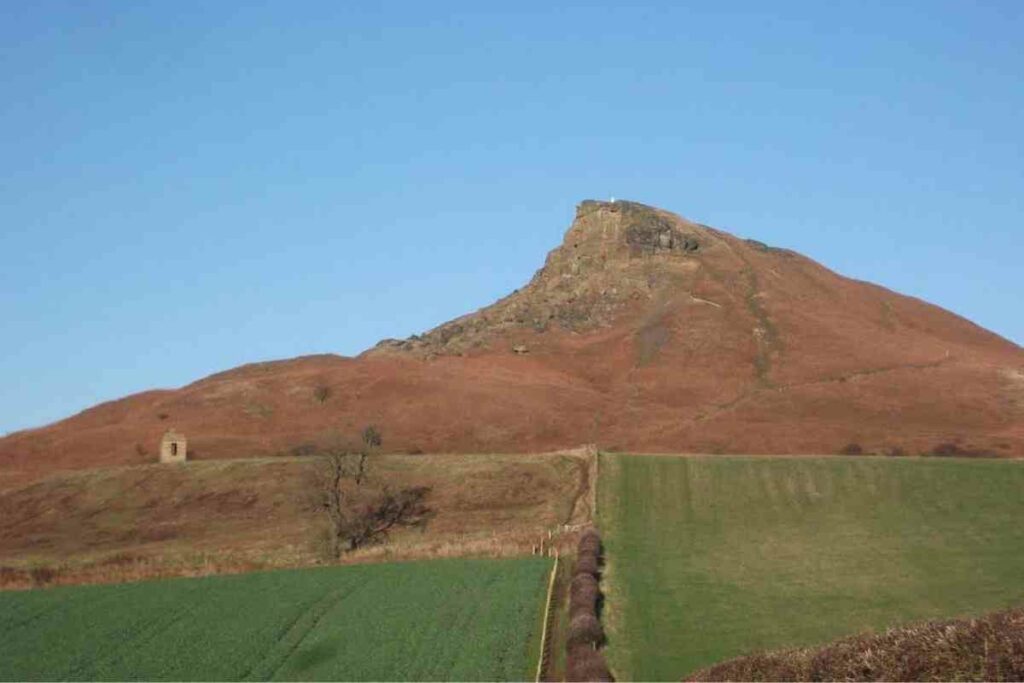
Bronze age materials have been found on its slope and these are now housed in the Sheffield City Museum.
The Iron Age also saw its occupation as walled enclosures have been discovered, with some remains still visible near the hill today.
There’s a late 18th-century shooting box still present at the foot of the hill.
It was built for Captain Wilson who was one of Captain Cook’s friends. Its construction served to shelter shooters from the elements and is still used as a picnic spot.
What’s In a Name?
The Vikings settled in the area and gave many places their names, including Roseberry Topping’s name itself.
In fact, Roseberry Topping is said to have had no fewer than 24 names that we know of. In 1119 it was named “Othenseberg,” with ‘berg’ having supposedly been derived from bjarg, the Old Norse for ‘rock’.
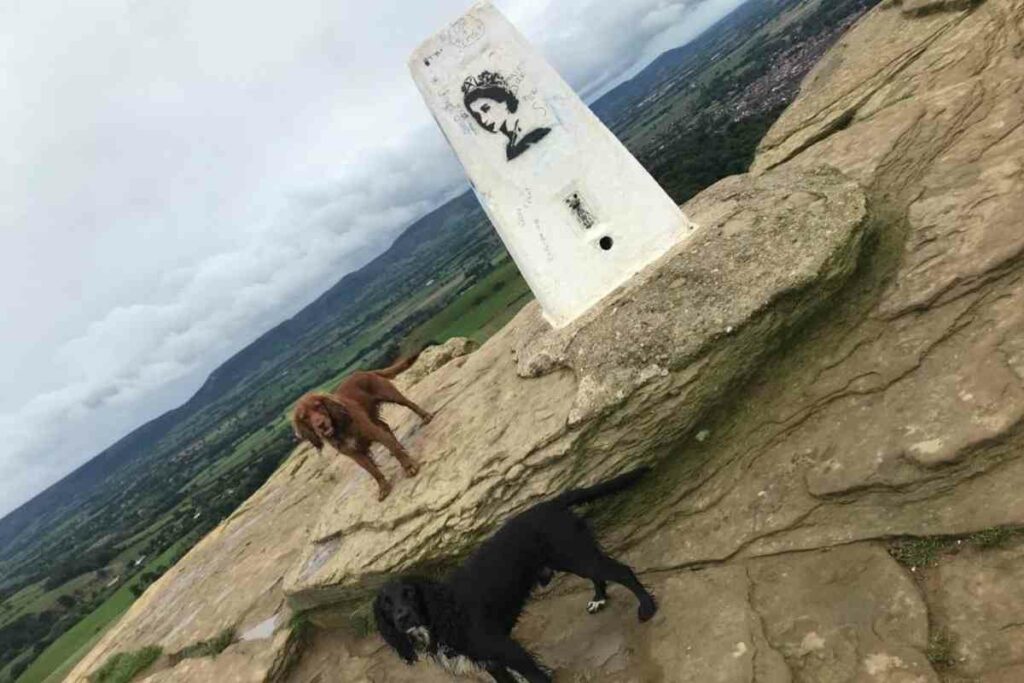
It’s believed that the first part of the name is likely an Old Norse first name such as Óthinn or Authunn making it Óthinn’s Rock, for example.
Some sources say that it was also called Odins-Beorg, which meant “Odin’s Hill.” As such, it could even have been a place of pagan worship for the Viking god.
The name then changed to Othensberg, Ohenseberg before it became Ounsberry and Ouseberry where we can see the origins of its current name of Roseberry.
In Saxon Times – “Ross” meant common or health and “bury” fortress, so it’s not difficult to see how such a name may have evolved. “Topping” is said to be a derivation of topp from the Old English meaning the top of a hill.
Captain James Cook
It’s impossible to write about Roseberry Topping without mentioning the great explorer, James Cook.
Born locally, in 1736, James Cook’s family moved to land near Roseberry Topping at Airey Holme Farm.
James spent time working on the farm but would often head up Roseberry.
It’s said to have given him a thirst for adventure and exploration, which led him to his other exploratory exploits.
Routes
Roseberry Topping is open to the public and is now a part of the National Trust.
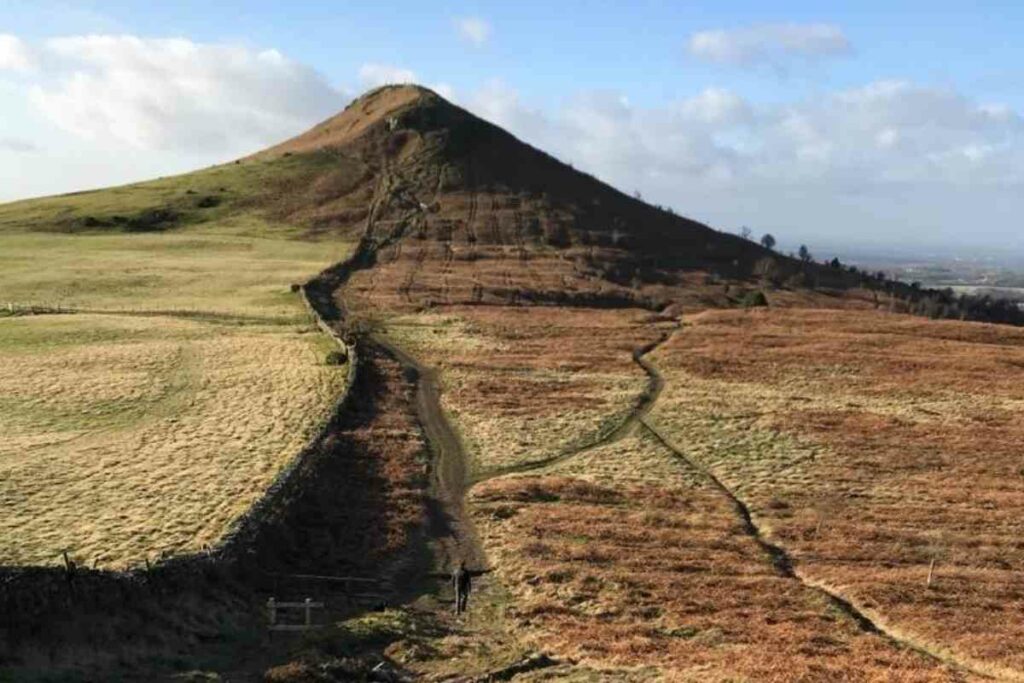
There are several routes up the famous mound, some taking a more gentle approach than others.
Straight up and Down
The most direct route is straight up from the car park at nearby Newton-under-Roseberry, following Roseberry Lane.
Most people who are reasonably fit should be able to summit from there in around half an hour or so.
It’s only about 1.3 miles, but as it’s a straight up and back down type of route, it is steep in both directions, not just at the end.
There are a couple of benches en route should you need a quick pitstop though.
Bluebell Wood
Perhaps the prettiest route in May or early June would be heading up via Newton Wood – commonly known as Bluebell Wood.
I’m sure you can guess why!
Looking at the bluebells with Roseberry Topping in the background is a remarkable sight. A carpet of blue awaits you.
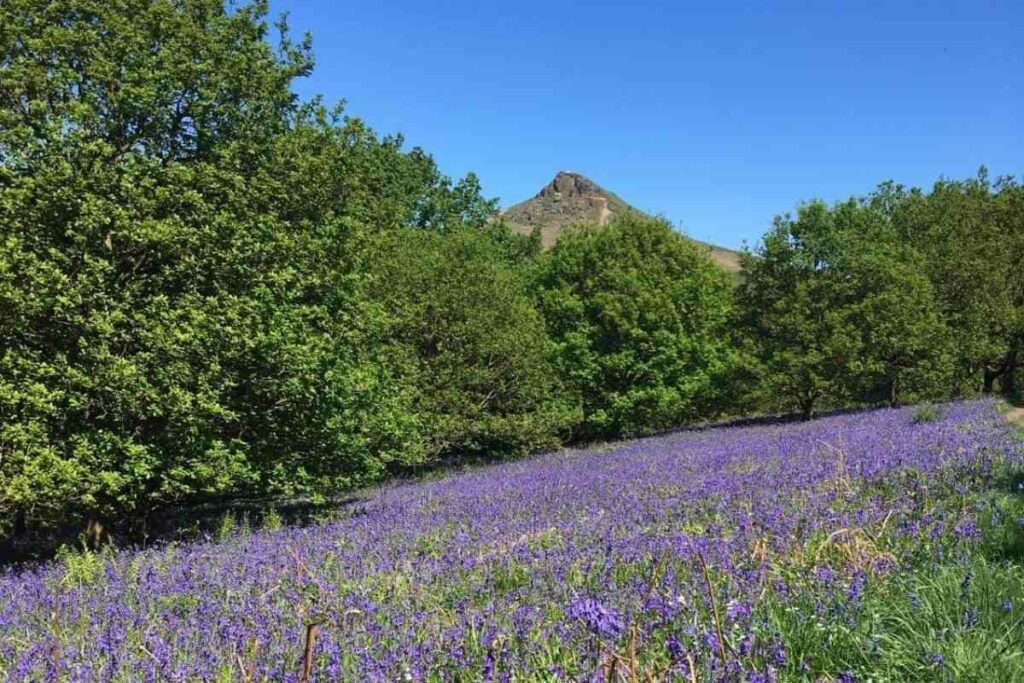
You can still head up from Roseberry Lane but take a right through Newton Wood rather than going straight up.
The path will take you through the bluebells.
You’ll need to take a sharp left at a hairpin bend in the path to see the beautiful view of Roseberry before heading up to the top.
This route is much gentler and slightly longer than the straight-up-and-down route.
It’ll take around 1.5 hours and is around 2.4 miles in length. You can also combine this walk through the woods with longer routes from Great Ayton too.
From Great Ayton to Captain Cook’s Circular Route
This route takes you from Great Ayton and is a longer, circular route of around 7 miles.
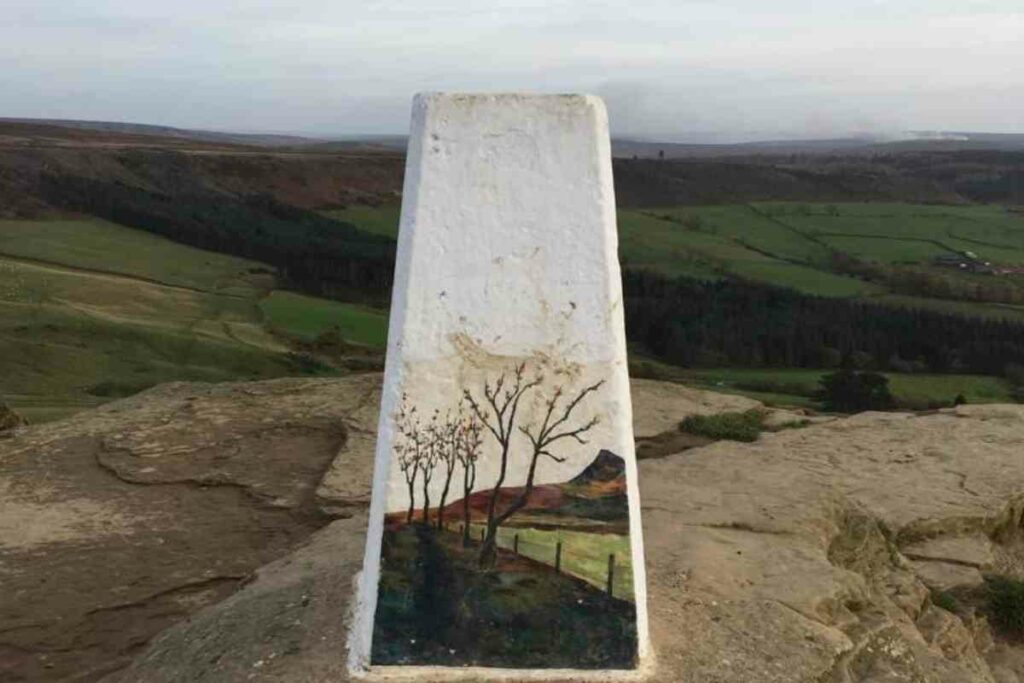
Starting from Great Ayton you’ll travel anticlockwise and take in Roseberry Topping and Captain Cook’s monument before heading back into the village.
Starting from the village green, head up Station Road, continue past the station, and up Dikes Lane.
You can then head up Airey Home Lane, taking you to Airey Home Farm.
From Here – You can choose to go straight up Roseberry or skirt around the wood bottom first to take in the views with the bluebells in Newton Wood.
Once you’ve summited, you can head down the path to join the Cleveland Way path and head south towards Captain Cook’s monument.
You’ll take a dip down some steps to the monument’s car park before heading back up the other side to find the monument which appears just as you leave the tree line on Easby Moor.
From the monument, you can head back down through Ayton Banks wood.
If you’re going this way, I’d recommend a stop-off at Fletcher’s Farm – a large coffee shop with an extensive menu. There’s even a campsite, farm shop and play area too.
Influence on Local Legends
We’ve mentioned its influence on Captain Cook, but its influence is still inspiring people in the 20th century and beyond.
Chris Rea wrote the song Chisel Hill from his album Shamrock Diaries with Roseberry Topping in mind!
Aside from Chris Rea, explorer Alan Hinkes from nearby Romanby and the first Briton to climb the world’s highest mountains, says that Roseberry Topping is one of his favorites.
He says that he was fascinated by the “matchstick people” on the top as he drove to the seaside as a child.
In Fact – Rather than it being the Matternhorn of North Yorkshire, he calls the Matternhorn the Roseberry Topping of Zermatt.
The Surrounding Area
Newton-under-Roseberry
Roseberry Topping is most easily accessed from the small village of Newton-under-Roseberry.
The village has limited parking, but it does boast the King’s Head pub where you can eat, drink and stay should you need to.
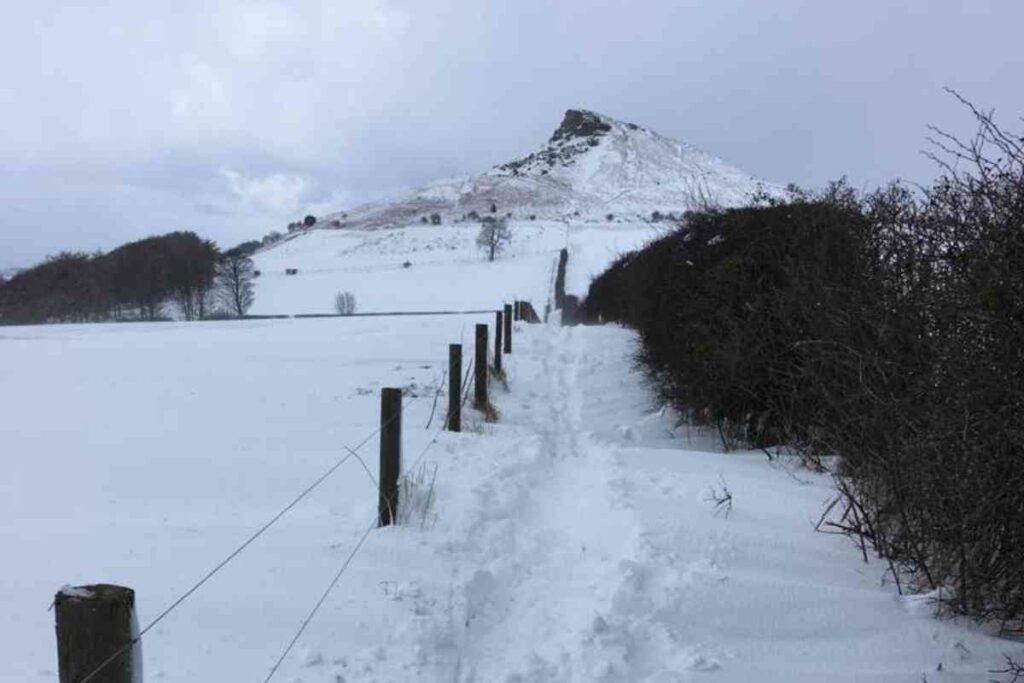
Great Ayton
Great Ayton is the famous boyhood home of Captain James Cook.
There’s even the schoolroom museum in the village center in his honor.
No visit to Great Ayton would be complete without dropping in at Suggitt’s Ice Creams – the renowned ice cream shop where visitors come for miles for their ice cream fix.
The village also has its two village greens and ample pubs and places to eat and drink including The Royal Oak and The Buck Hotel.
Final Thoughts
Stunning views, bluest of bluebells, and exploration inspiration, Roseberry Topping has it all.
There’s no wonder Captain Cook was so inspired when he climbed to the top. Your climb up might take you further than you think.

